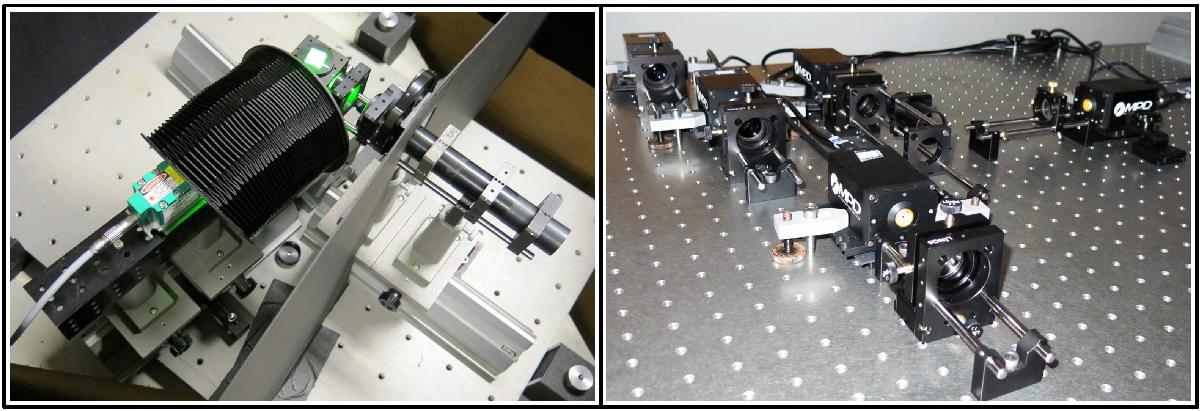Fig. 3

Components in the laboratory setup. Left: light from a 300 mW λ 532 nm laser is made chaotic by scattering from microscopic particles in a square-top cuvette and focused by a condenser onto artificial “stars”, which are mechanical apertures in a rotatable holder. Right: the “stars” are observed by a group of (here) five small telescopes with 25 mm apertures, each equipped with a photon-counting SPAD detector. One unit perpendicular to the others uses a 45-degree mirror to obtain a particularly short baseline. Another pair of two telescopes behind one beamsplitter serves to measure zero baseline, as required for calibrations. Two-dimensional coverage is achieved by successively rotating the position angle of the source relative to the plane of the telescopes.
Current usage metrics show cumulative count of Article Views (full-text article views including HTML views, PDF and ePub downloads, according to the available data) and Abstracts Views on Vision4Press platform.
Data correspond to usage on the plateform after 2015. The current usage metrics is available 48-96 hours after online publication and is updated daily on week days.
Initial download of the metrics may take a while.


